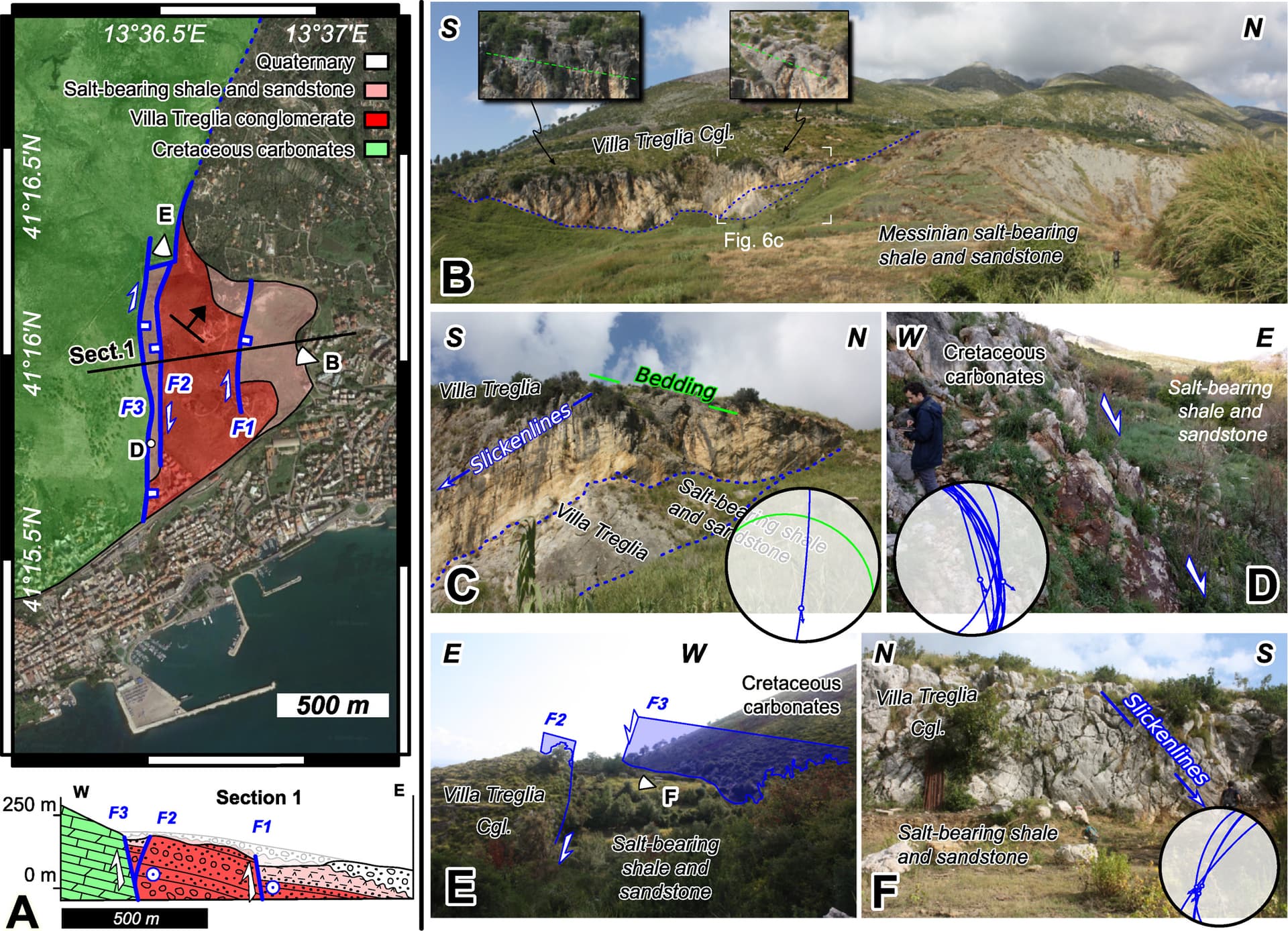
"The Tyrrhenian back-arc basin developed at the rear of the E-ward migrating Apennine fold-and-thrust belt, with northward decreasing rollback of the subducting Adria slab leading to northward fading of back-arc extension. The northern portion of the Tyrrhenian basin is made of thinned continental crust, whereas in the central/southern portion extension eventually evolved to oceanic crust production.
In this framework, a long-lasting debate concerns the existence of a >200km long transform zone along the 41st parallel, which should separate the two portions of the Tyrrhenian basin.
At its eastern termination, a branch of the presumed transform zone enters the Tyrrhenian margin of the Apennine belt and occurs as an accommodation zone made of a ribbon of extensional faults and related basins. This accommodation zone, which separates areas of mutually perpendicular extension directions, is here introduced, described, and named the Ponza-Alife accommodation zone.
Interpretation of seismic lines and new structural and stratigraphic data from this accommodation zone have been used to constrain the pre-orogenic and syn-orogenic architecture of the subducting plate and the Plio-Quaternary back-arc extensional stage.
Our data indicate that the studied zone retraces a deep-seated transform fault system located in the subducting plate and inherited from an Early Jurassic rifting episode, which caused the lateral juxtaposition of different rift domains in the subducting plate.
We propose that during collision and trench retreat, this lateral juxtaposition has controlled differential retreat of the subducting plate across the studied zone, forcing the development of the Ponza-Alife accommodation zone in the overlying back-arc basin’s margin."
S. Tavani, G. L. Cardello, G. Vignaroli, F. Balsamo, M. Sabbatino, I. Raffi, A. Billi, E. Carminati
DOI: 10.1029/2021TC006770